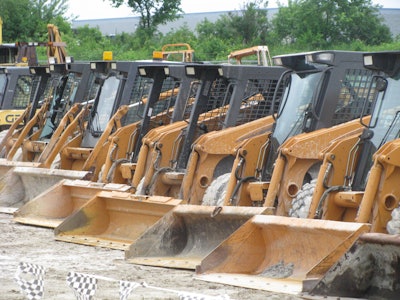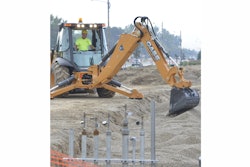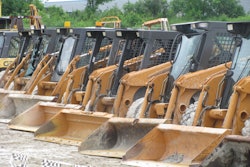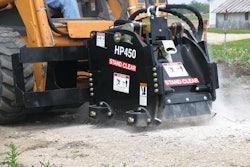
It was nice meeting you — at CONEXPO/CON-AGG, that is. I probably walked past thousands of you that week. (I was the good-looking CPA type.)
My tour of duty started on Monday morning with meetings and continued until Saturday morning. I apparently didn’t listen to the “wear good shoes” advice before I left, because I have to tell you my feet just stopped hurting a week ago. I must have walked the floor 20 times during the week trying to find associates and people I needed to see. You know how it goes. You take a chance the person you’re looking for is just waiting for you to show up. That didn’t happen. Heck, I couldn’t even find Becky (Equipment Today editor) and I missed the triennial Cygnus brat fry!
So, assuming you were one of the nearly 130,000 folks who attended, how much did you spend? There certainly was an impressive collection of machinery and services to choose from. I hope you didn’t overdo it because the market is still a bit shaky out there. From talking to various vendors, it was a very profitable show, so I guess you probably did overspend a bit. That being said, just keep spending under control for the rest of the year unless you know you will have at least 75% time utilization on anything else you buy.
Even though many OEMs indicated they were having a good show, some did fess up and admit this was the last round of units coming out before Tier 4, which probably added to their sales activity.
With equipment purchases on the upswing, financing must be available and interest rates need to be reasonable from both banks and captive finance companies. That seems to be the case as long as your financials and credit record are in the right zone. In any event, credit availability is increasing and interest rates are workable at current rates.
Anticipate Your Needs
I don’t think there’s any doubt that construction activity is picking up. Where you’re located will impact the percentage increase you see. But even in Chicago, where it has generally “sucked” the last couple of years, rental activity has been strong since the beginning of 2014. Activity is strong but spreading from a 50-mile radius to about 100 miles — which is one of the reasons rental transactions are increasing.
For the past couple of years, an estimated 51% of new construction equipment manufactured has made its way onto rental lots, which includes both rental company and dealer fleets. For those of you who rent equipment, this means there should be more availability of the types of units you need in 2014.
On the other hand, with many rental companies just starting to reach pre-2009 unit levels, there could still be shortages during the heavy summer and fall construction months. As your workloads increase, it will pay to properly anticipate your equipment needs so you get your orders in with plenty of time to spare.
Setting Internal Rental Rates
I have received a few phone calls from construction companies with questions about internal rental rates. These calls will normally come from larger contractors that own a significant fleet of equipment they can rent to their own jobs or to other contractors if they have the time available. My response to their questions is:
You need to collect at least 25% to 30% of the cost of the equipment as rental revenue per year to cover ownership costs, with these dollars compressed into the usual time utilization you experience. For example, the 25% rate over a year is 2.5% per month. At 70% utilization, you have to collect 3.5% per month, or a 44% increase over the 12-month rate to generate the same revenue.
If you don’t have at least a 70% to 80% time utilization, it is probably cheaper to rent if the type of equipment you typically use is available from a rental source. A cost to own or rent analysis should be prepared to determine if it really pays to own as much equipment as you do. I’m sure you could put any cash you receive from selling some of your fleet to good use in other areas.
If you have questions about rental rates please call me, because it’s a topic I love to discuss.
Here is your homework assignment this month: I want you to ponder the impact on rental, dealer and equipment manufacturing businesses and your business if, in fact, 51% of construction equipment produced continues to wind up in rental fleets. I’ve been thinking about this question for several months now and would like to receive some input from the boots on the street to see what you think. You can call me at (708) 347-9109 or email me at [email protected].
Time to go soak my feet!




















